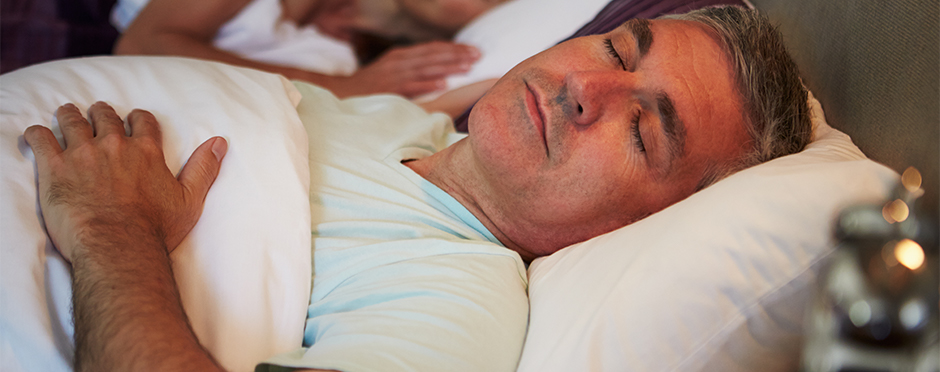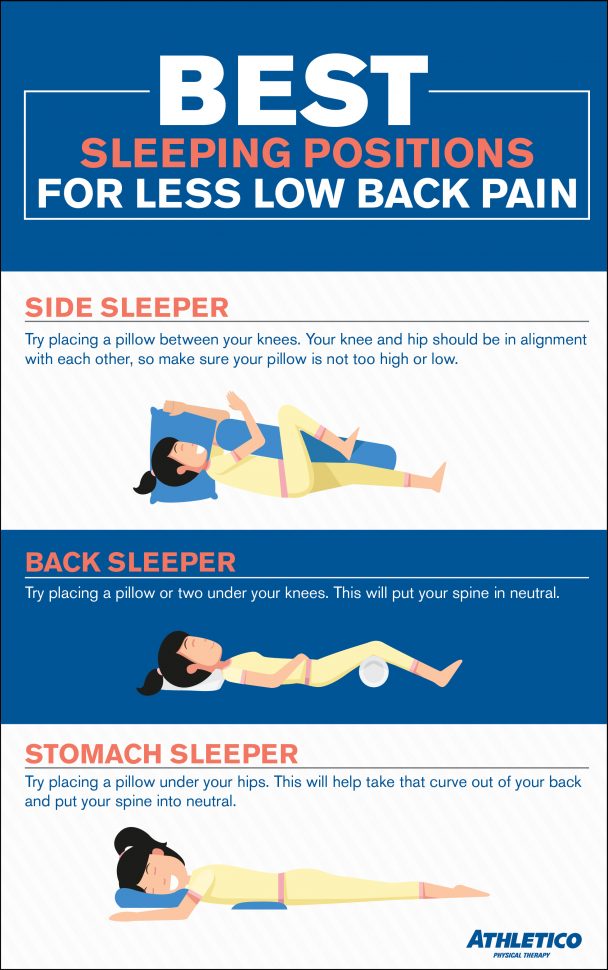
Sleep Positions for Less Low Back Pain
1 CommentAs a physical therapist, one of the biggest complaints I receive about low back pain (LBP) is about how it can impact one’s ability to sleep through the night. According to research, low back pain is the second most common cause of disability in adults in the U.S., and the most common reason for lost work days.1
Over 80 percent of the population will experience an episode of LBP at some time during life. There are many components that can contribute to low back pain at night, including mattress, mattress pad, pillows, room temperature and sleeping position. In fact, research shows that proper sleep position can align the spine to some extent into its neutral posture, which is the same as the spine alignment in upright posture.2
Since sleeping position is one of the best and easiest things to adjust, we are highlighting some of the best sleeping positions for low back pain below:
- Side sleepers: Please note that you can use a regular sized pillow between your knees, a body pillow or a snoogle. The snoogle is usually recommended during pregnancy for sleeping, but it can also be helpful for people with low back pain.
For all of the positions above, you may have to play around with the size and thickness of the pillow you are using. If you have very flat pillows, you may need to use more than one. Because of this, it is best to test out different size pillows and see which works best for you and your spine.
If none of these positions help you out after a few nights, schedule an appointment for a free assessment at your nearest Athletico clinic so our experts can help identify the cause of your pain.
Free assessments are available in-clinic or virtually through telehealth. Request your free assessment using the button below.
The Athletico blog is an educational resource written by Athletico employees. Athletico bloggers are licensed professionals who abide by the code of ethics outlined by their respective professional associations. The content published in blog posts represents the opinion of the individual author based on their expertise and experience. The content provided in this blog is for informational purposes only, does not constitute medical advice and should not be relied on for making personal health decisions.
References:
1. Freburger, Janet et al. The rising Prevalence of Chronic Low back Pain. Arch Intern Med. 2009 251-258.
2. Leilnahari et al.: Spine alignment in men during lateral sleep position: experimental study and modeling. BioMedical Engineering OnLine 2011 10:103.


1 Comment
Pat
Very good article. I forgot about the pillow between the legs